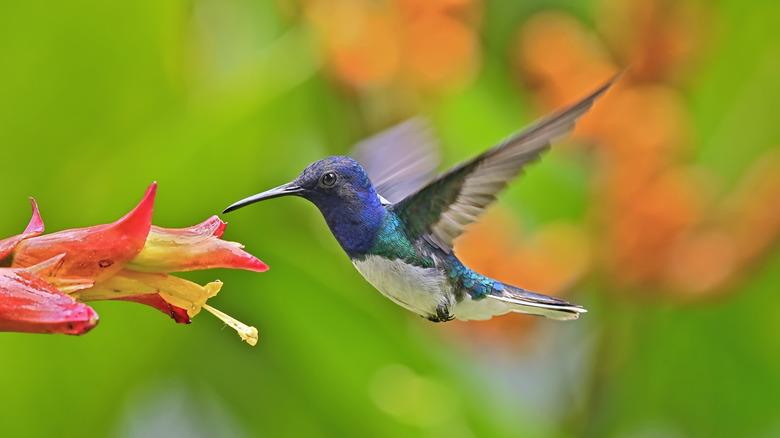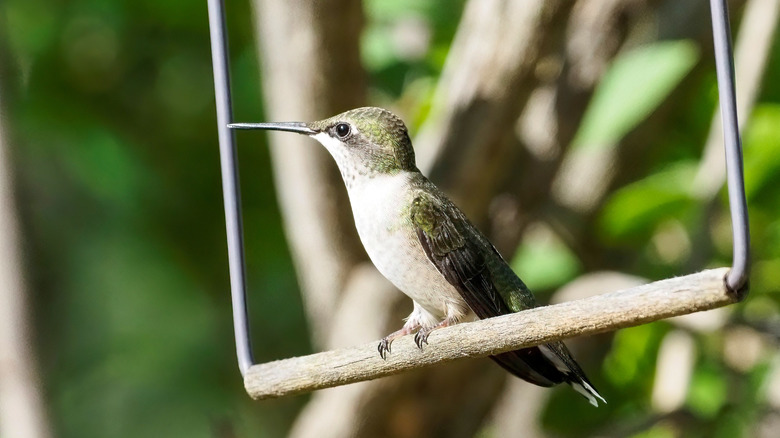Attract More Hummingbirds With An Underrated Garden Accessory They Love
Did you know that you can attract more hummingbirds to your yard with a simple swing? Indeed, even the most hummingbird-friendly gardens can still benefit from this small, underrated upgrade. These minimalist perches, often no more than a simple frame and bar, can give hummingbirds a place to pause —something they need far more than many people realize. Though hummingbirds are known for their quick, darting movements and the majestic air of their constant hovering, they spend a large part of their day resting. In fact, these tiny creatures may perch for as much as 80% of the day, either to preen, nap, digest, or just keep an eye on their territory. And yes, the hummingbird swing really can become a part of their routine.
You see, for these birds, perching isn't just about downtime. Hummingbirds, particularly males, are fiercely territorial and love a high vantage point from which they can watch over a nearby feeder. For this reason, a hummingbird swing placed about a foot from a nectar source offers a perfect lookout post for these feathered friends. And you don't need to go overboard with design; a simple wood or metal bar will do. You can find hummingbird swings for under $10, or you can bring the charm of hummingbirds to your garden with this easy DIY swing. In the end, it might not seem like very much, but this one accessory can turn a feeder zone into a full-fledged hummingbird hangout. Just remember, placement is everything.
Hummingbird swing placement makes all the difference
It's not just the hummingbird swing itself that matters; it's all about how and where you install it. These clever birds are surprisingly habitual and cautious, so their environment plays a major role in whether they'll use a swing at all. One trick is to first place the swing where your feeder used to be, then move the feeder about a foot away. Hummingbirds are smart and will remember that spot, especially if they've already claimed it. Even better if the swing sits near a natural retreat, like a tall flowering hedge or shaded nook, which adds protection from predators and midday heat. Just avoid putting it in the open where it's fully exposed to wind or direct sun all day.
Also, consider aesthetics and material safety. Avoid rope swings that could entangle tiny feet, and instead look for designs made with coated wire, smooth wood, or plastic. Bonus points if the frame includes red or orange beads, since those colors can help attract a hummingbird. And once you've got your little hummingbird oasis set up, maintenance of the swing and its surrounding area is key. Keep nearby bird feeders clean and make sure to refill the nectar every few days, especially in warm weather when it can spoil quickly. Then, once your setup is complete and birds are frequenting your yard, you may want to check out how to make nesting boxes safe from the summer heat to further support their seasonal needs.

